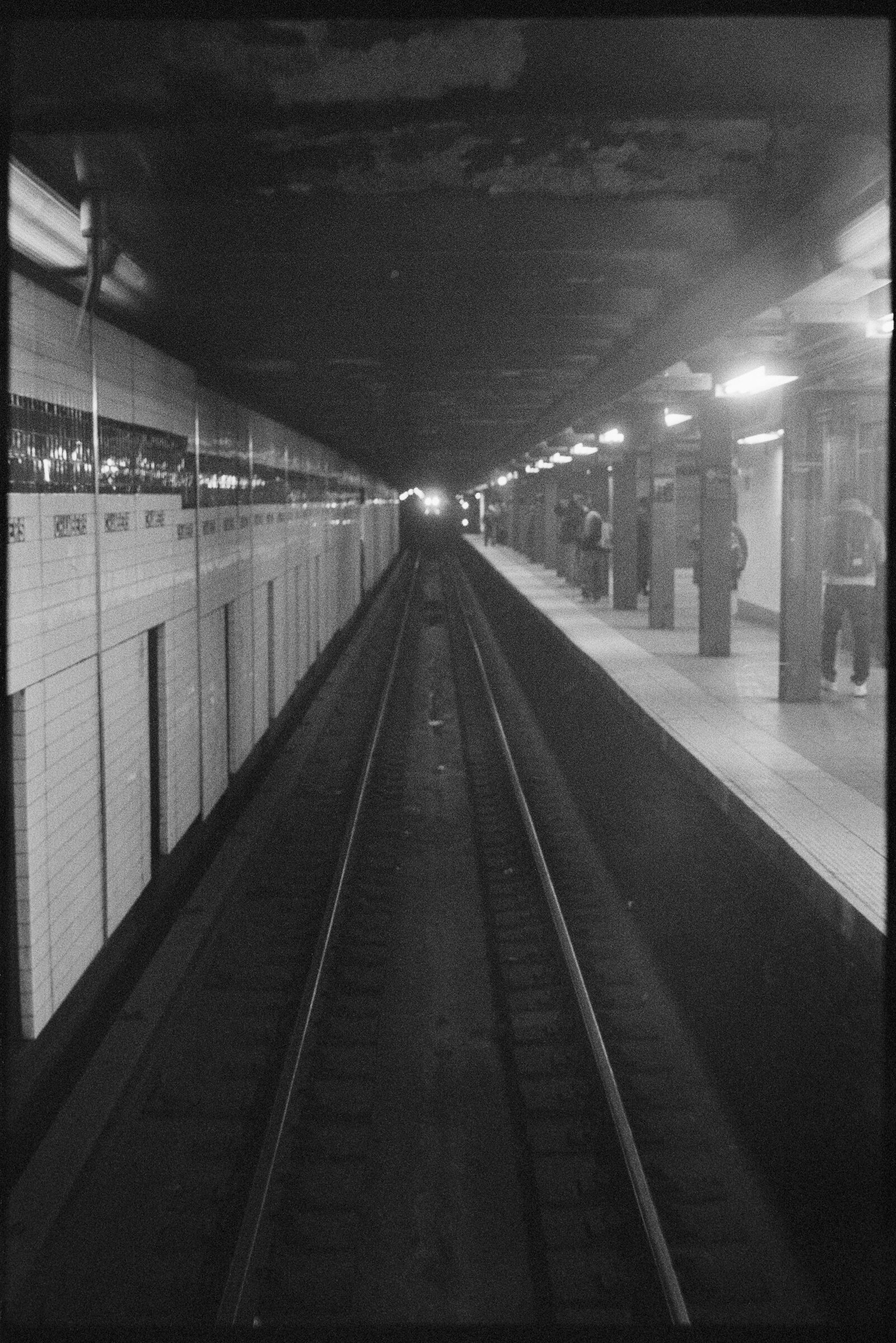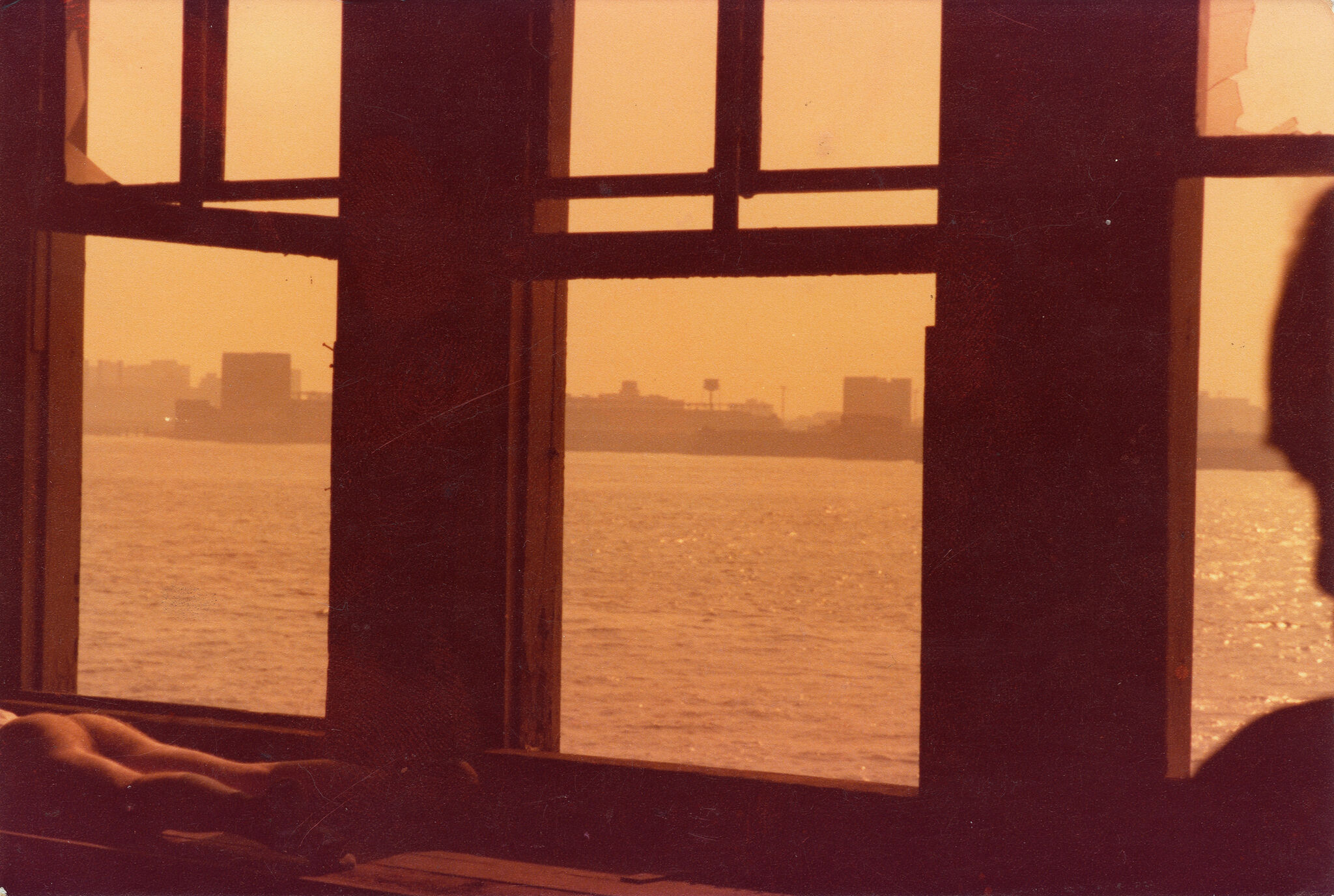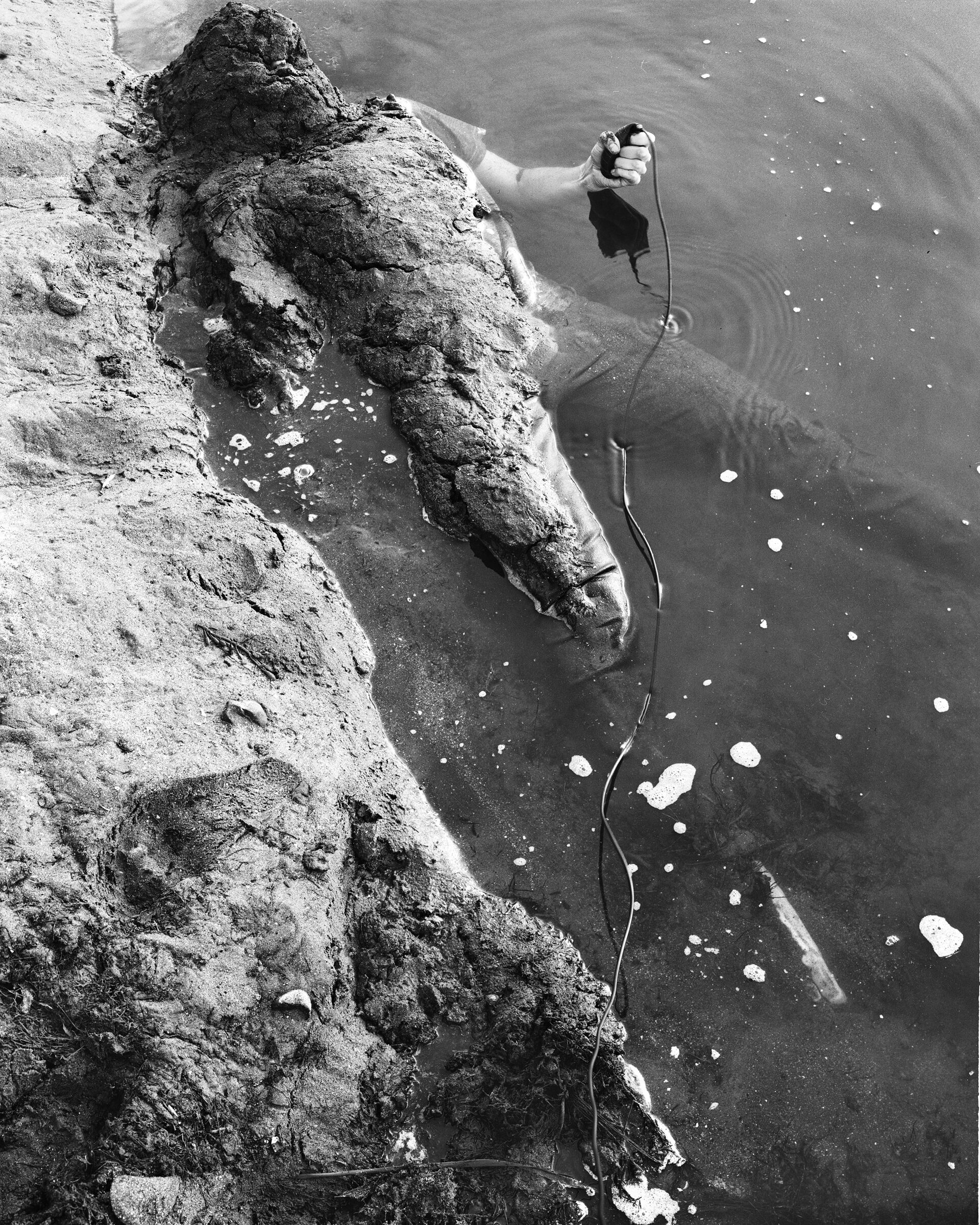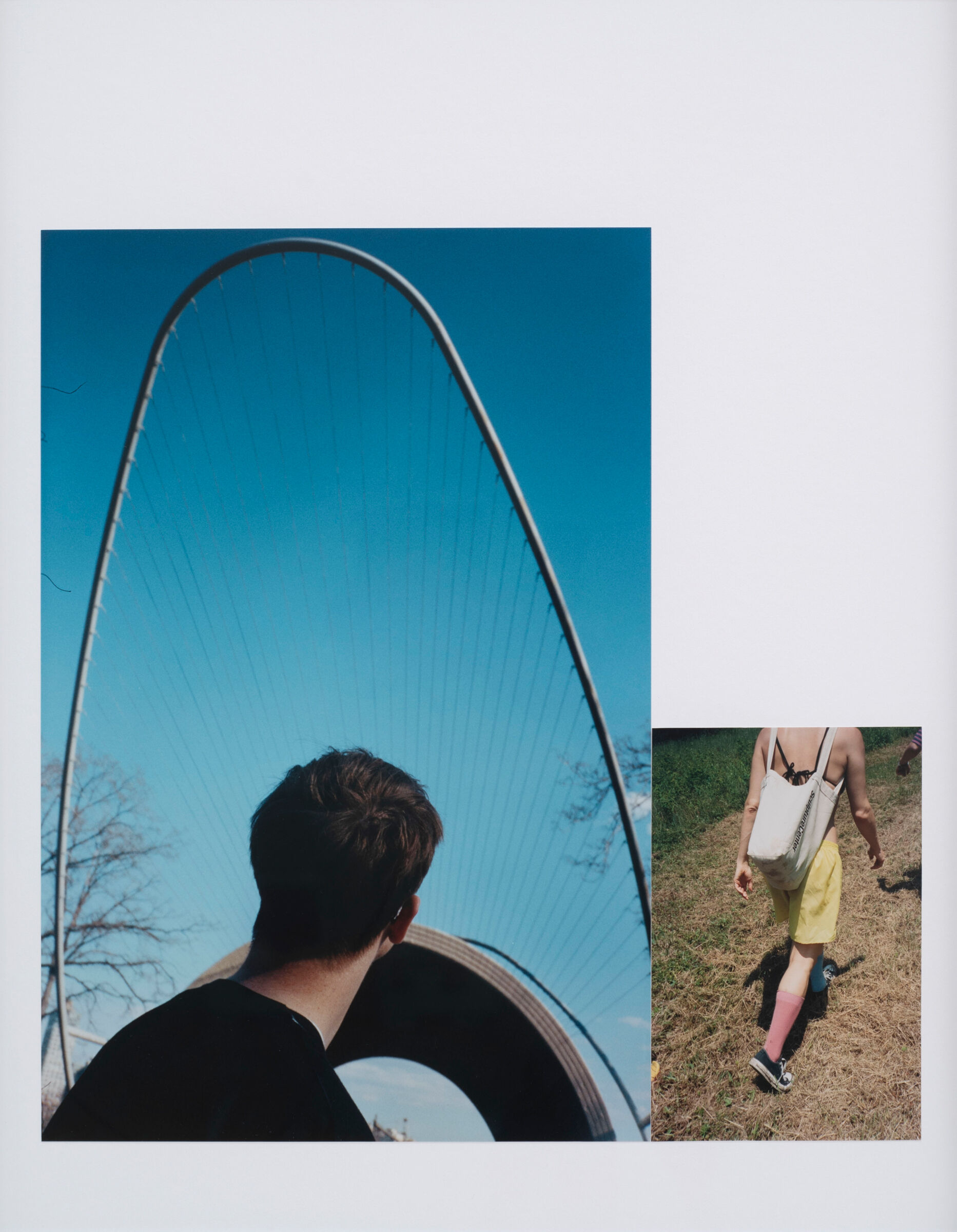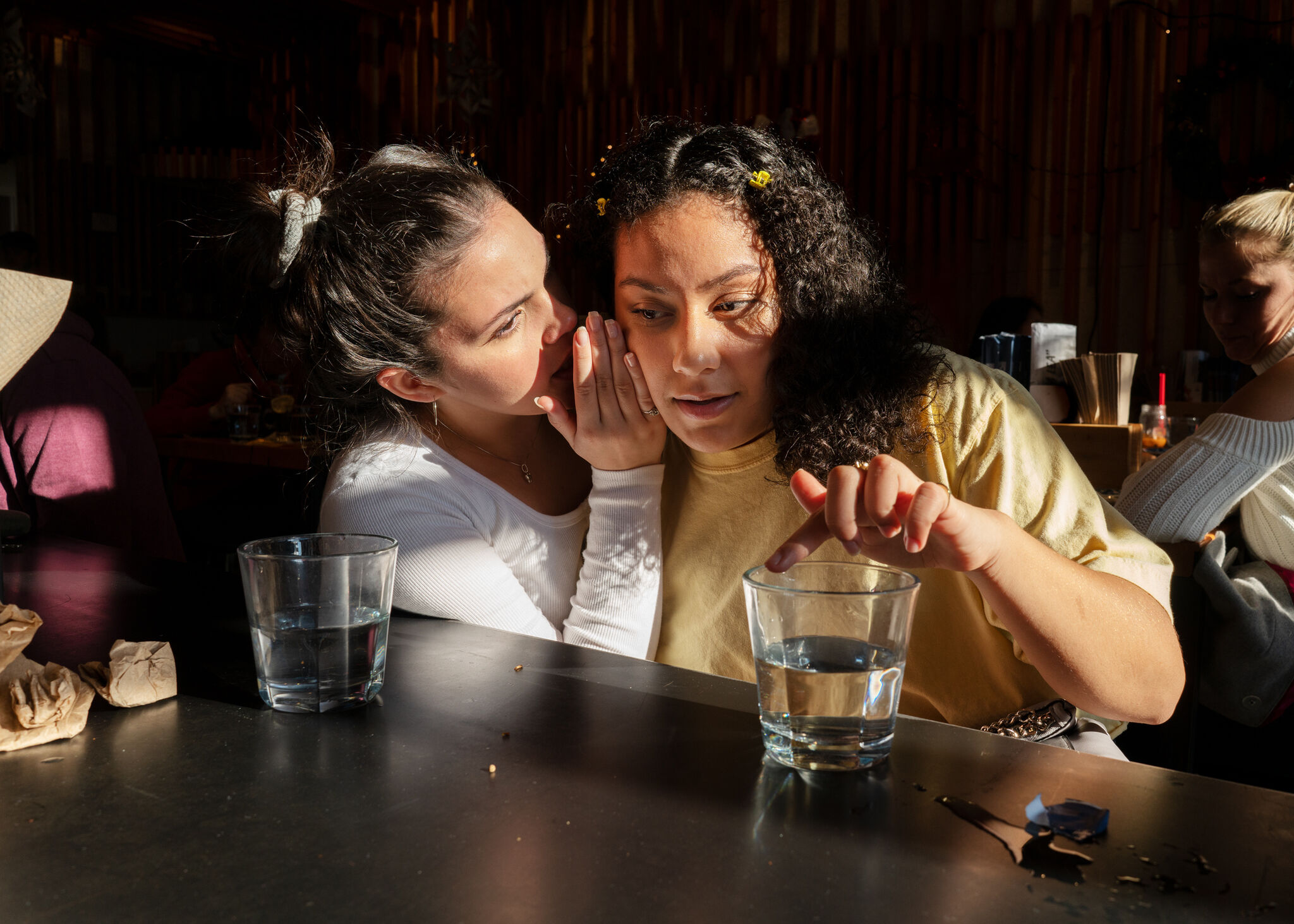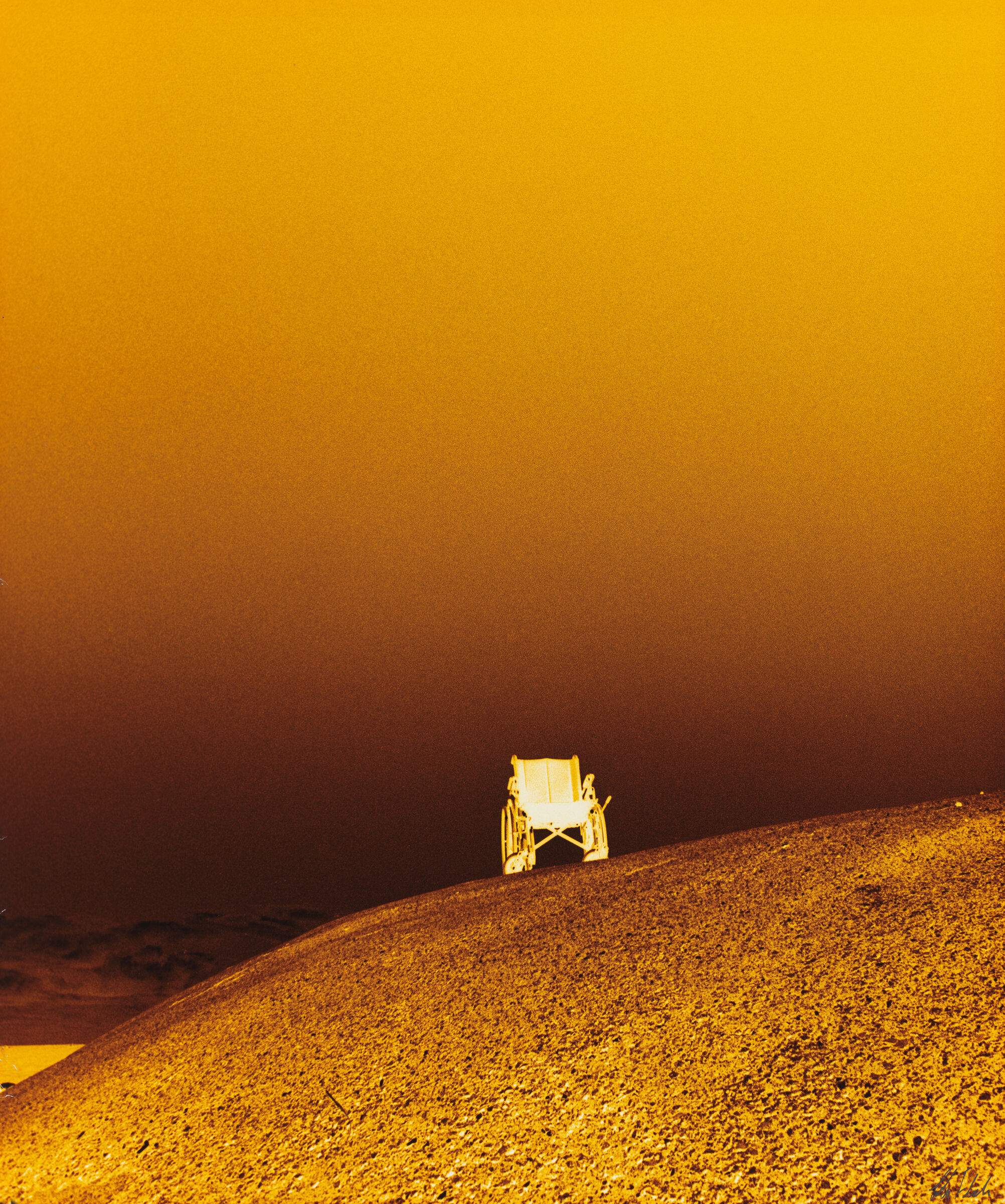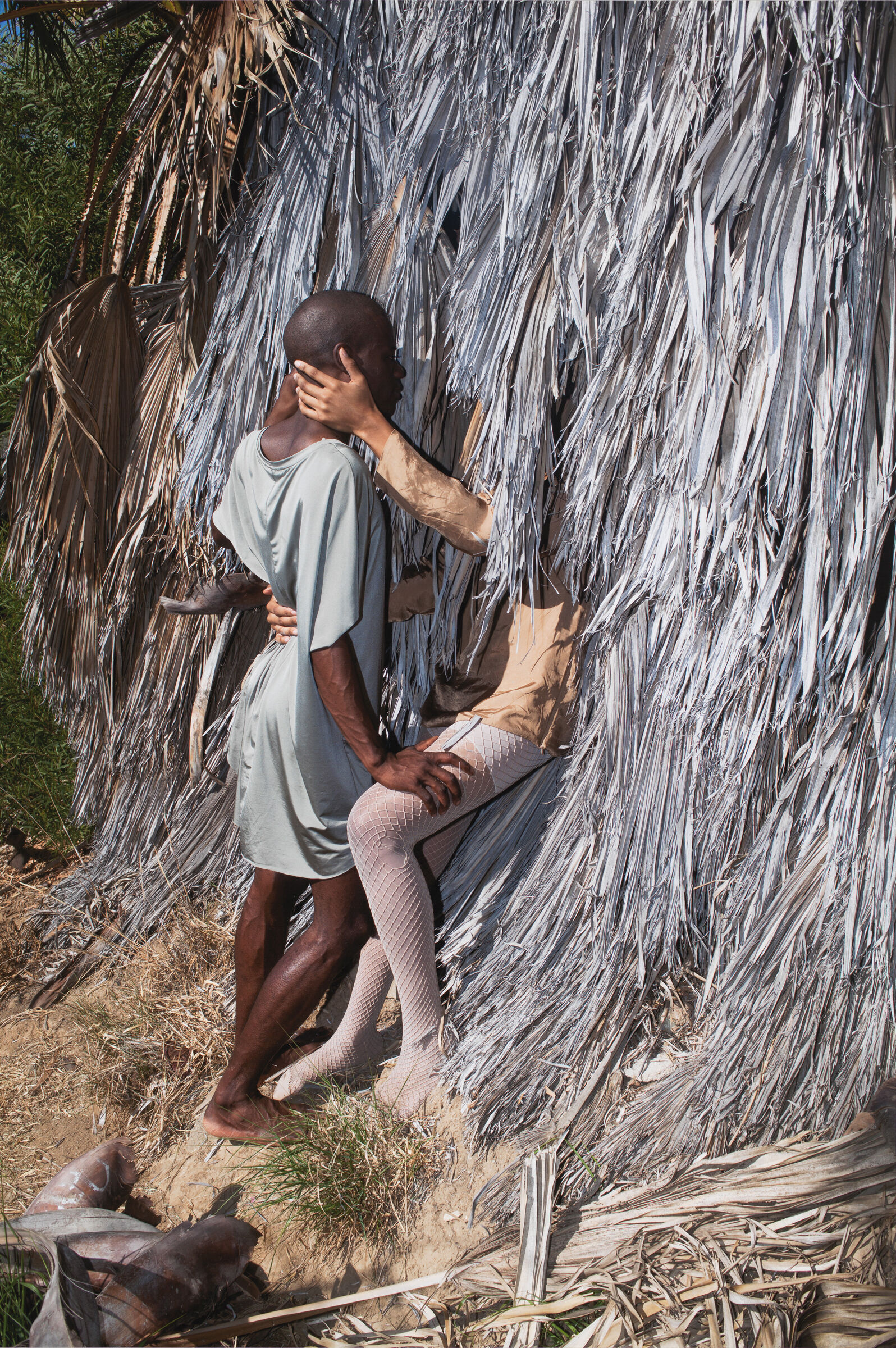Hand on my stupid heart.
Hand on my stupid heart.Cameron Awkward-Rich, “Meditations in an Emergency,” in Dispatch: Poems (New York: Persea Books, 2020), 22. All subsequent italicized segments are from this poem.
It’s the last line of the first poem that ever occupied me for days, and it felt so true that I couldn’t even share it—at least not right away. It’s taped to my computer monitor alongside budget codes and due dates scribbled on Post-it notes, and a photograph of dear friends and former colleagues crowded together under one big umbrella somewhere on Washington Street, laughing in the pouring rain. Next to it hangs an image from Zoe Leonard’s 2016 series Downtown (for Douglas), which shows the lights of an oncoming train dead ahead as it pulls into the station (or perhaps is on its way out?).
Hand on my heart.
The setting sun reflects off the windows of the hotel across the way and blinds me at my desk, blotting out the photographs, the Post-its, the poem, and the work on my computer screen. I watch it glittering on the Hudson River below, where Alvin Baltrop made pictures of the piers and the vulnerable, joyful, desperate, searching people who made use of them in the 1970s and 1980s. I imagine Moyra Davey picking up green rivetsAt her 2020 retrospective at the National Gallery of Canada, Davey installed one of her mailed color photographic works, Trust Me (2011), behind a line of green rivets on the floor, which functioned as a kind of artist-created stanchion. The Whitney exhibition takes its name from that work.on the West Side Highway, which runs alongside the river and glitters at sunset, too, with the headlights and taillights of rush-hour traffic. People heading home.
Like you, I was born. Like you, I was raised in the institution of dreaming.
Maybe the first and most important thing is an admission of vulnerability. While I was developing Trust Me as an idea in 2021 and 2022, and then later as an exhibition, a few things were happening simultaneously. The pandemic had flipped a mean switch in me, and novels—one of my favorite things in this world—suddenly didn’t make sense for a long while, but I found sustenance through poetry and consumed it insatiably. People were dying, and in a landscape of unfathomable personal and communal loss, in moments of learning how to be (and of learning how to be together, again), the testimony of a poem felt bearable in a way that the escapism of a novel did not. You are elsewhere, says the novel. You are here, says the poem. And this is how it feels.
Meanwhile, cultural institutions were pulling together DEAI (diversity, equity, access, and inclusion) plans, statements, and working groups in the wake of George Floyd’s murder, and new attention was being paid to the (not-new) structures of white supremacy and anti-Black racism upon which such institutions are built. Museums offered spaces for staff to reflect on their experiences of inequity and struggle, and the language of care became common parlance for a range of good (if sometimes vague) intentions. Museums recommitted (or committed for the very first time) to change. And although museum workers are still dazedly figuring out where that change has brought us three years later, what’s unmistakable is a growing recognition in the art world (and in the world-world) of how mighty and how worthy efforts grounded in mutuality and solidarity can be.One could also, of course, look to the ongoing wave of unionization within our cultural institutions, and know this.
Exhibitions engaged with empathy and intimacy began popping up at other institutions, near and far. At the Frances Young Tang Teaching Museum and Art Gallery at Skidmore College in Saratoga Springs, New York, Where Words Falter: Art and Empathy (2022) examined the potential for compassion and connection to spur “socially conscious action” beyond the museum, focusing primarily on figurative work, for instance images from Laurel Nakadate’s 365 Days: A Catalogue of Tears (2010) and Donna Ferrato’s portraits of women who have survived domestic violence. After visiting Justine Kurland’s studio space in Brooklyn to see Genesis Báez and Jenny Calivas’s wondrous two-person show of friendship and mutual support, Silt of Each Other, I walked around the corner and dropped in to A.I.R. Gallery’s 15th biennial exhibition, Friend of the Artist, which brought together works exploring “sociality as a condition of artmaking.” Within a week of each other in spring 2023, the San Francisco Museum of Modern Art and the International Center of Photography in New York opened Kinship: Photography and Connection and Love Songs: Photography and Intimacy, respectively. And a few blocks from the Whitney, the Center for Art, Research and Alliances (CARA) engaged an “ethics of intimacy and reciprocity” with their spring exhibition and we learn to keep the soil wet, gathering historical and contemporary works that collectively ask: How can we embody our interdependence?
There are no borders, only wind.
At most museums of a certain size, it takes a relatively long time to research, propose, develop, and realize an exhibition—one, two, sometimes five or six years, from start to finish. A lot can happen in a year (let alone five or six). What once seemed urgent and resonant may become less so. Other curators (across the country or around the corner) may install exhibitions whose ideas mirror, collide with, or change your own. With such a premium on ideas, there is a temptation to be territorial—to move faster, be first, stake your claim more loudly. When I feel the edge of this prickling my mind, I think about a passage from Lee Lozano’s notebooks that never fails to make me chuckle, and reconsider: “PASS ON IDEAS. (NEVER MIND WHO GETS THE CREDIT FOR THEM, YOU RIVAL RABBITS.) GIVE AWAY YOUR IDEAS.”Iris Müller-Westermann, “Private Notebooks, 1968–70,” in Lee Lozano (Berlin: Hatje Cantz Verlag, 2010), 235.
How can I argue with that? Anyway, maybe Trust Me was never an idea so much as the dozen other things that it is and might be: an invocation, and a question; a feeling, and an attempt to give it shape; testimony. You are here, and this is how it feels. This is a kind of knowing that artists have always offered to us, as viewers. But maybe our need for it has changed—sharpened, spread, and begun howling. Clearly, intimacy and deep feeling are having their moments in the art world and are being expressed with particular resolve through the medium of photography. Within this call and response, maybe we can know better where it is that we stand.
There’s a dream I have in which I love the world.
The pandemic didn’t just take novels from me. I had to remember how to experience art again, too, and so I sought out works that could—in the way of poems—meet me where I was. These were reciprocal works that invited my feelings as much as they mirrored them, and offered examples of connections forged in risk (as all worthwhile connections are): photographs by and of Barbara Hammer in the 1970s, newly out and exploring her sexuality with joy and abandon; D’Angelo Lovell Williams swimming or tumbling toward paradise and an unassured but freer world; Dakota Mace reaching for connections to land and ancestors through abstracted designs of her family’s silversmithing work; Jenny Calivas burying herself along the shoreline, listening to the earth.
What a miracle it is to be beheld by others, and to behold them in turn—and how frightening. To put one’s work out into the world is to ask for understanding, and to accept that it may not be forthcoming. Trust is not always fulfilled; misunderstanding, mistranslation, and deception are a part of this landscape, too. One could argue that all art is an expression of vulnerability, because expression itself makes one vulnerable. But the works in Trust Me engage with vulnerability and the role it plays in building emotional connection in more ways than one.
I go outside. I ride the train, walk among the buildings, men in Monday suits. The flight of doves, the city of tents beneath the underpass, the huddled mass, old women hawking roses, & children all of them, break my heart.
Mary Manning has compared their careful juxtapositions of 35mm prints to scraps of music, or verses of poetry: “The beloved pieces and pictures together become a song lyric or notes for something I might be too afraid to say out loud. Maybe these are stories, but really they are more like poems. These strung together images attempt to do the work of words. In the same way that a poem brings together what is scattered, I hope that these photographs will mirror this labor.”Mary Manning, “Love,” in the press release for Love, Canada Gallery, New York, October 26–December 9, 2018.Spider silk; luna moth wings; someone else’s dear ones, laughing; a parabola streaking darkly across the sky. Anyone who has ever made a mix tape or a playlist for a crush or a lover understands how these choices bypass language but altogether speak, and the vulnerability of such a gesture. Listen to this or look here and—always—understand my meaning and please, oh please, feel what I feel, too.
Hand on my heart.
Maybe what we’re actually talking about is gesture, a kind of shorthand that communicates in feeling more (and more truly) than words ever could and communicates when words actually can’t. Even when words betrayed her, Laura Aguilar, who struggled with dyslexia and terrible shyness, communicated with heartbreaking eloquence and resolve through pictures. Entangled threads of identity and place soften and become easier to hold (and to trace) through Muriel Hasbun’s dreamlike, layered images referencing her father’s Palestinian origins, her mother’s Polish and French Jewish ancestry, and the artist’s own upbringing in El Salvador.
Genesis Báez traces through her images things that are invisible—the distance and the bond between a mother and a daughter separated by an ocean; the sound of a circle; the look of a whisper shared between friends. Gesture, physical touch, and moments of chance encounter within carefully staged tableaux create the near-magical conditions in which the contours of that invisible thing become real.
The art historian Debra Levine reads Lola Flash’s dazzling “cross-color” images from the late 1980s and early 1990s as representing a kind of “activist expressionism”—a radical feeling that couldn’t otherwise be expressed by and for queer communities during the height of the AIDS crisis. “The muchness of color, volume and disintegration, and the foreshortened monumentalism,” she writes, “opens the spectator up to a greater spectrum of feelings. What we feel looking at the photograph emulates the range of what we felt and suppressed at that historical moment. So much. Looking at these works now, it is almost unthinkable that we couldn’t let them teach us about the structures of whiteness which blind us to the advantages of admitting a spectrum of emotions, for those feelings can reposition us in an expanded field of time and space that generates strength, not weakness.”Debra Levine, “Lola Flash,” in Lola Flash: 1986 to Present (New York: Pen + Brush, 2018), 13.Walking on the beach a few months after the death of her friend, the artist and activist Ray Navarro, Flash happened upon an abandoned wheelchair and took it as a sign from Ray that he was there with her. In Flash’s photograph, the gravelly rise and the blue sky of morning dissolve into golden amber; the wheelchair is a white-hot sunburst on the horizon. In this bright, warm, comprehensible (yet unfamiliar) place, loving, mourning, missing, and meeting the person you’ve lost all seem equally possible.
I draw the blinds & the thrill of rain breaks my heart.
The photographs (and the poem) taped up in my cubicle aren’t just sentimental. They are a reminder, every day, that the work of art (and the work of art workers) doesn’t exist without connections to other people—networks of trust and creative care that nurture ideas, see and celebrate successes, and provide shelter in the pouring rain.
I wake up & it breaks my heart.
The Douglas referenced in Zoe Leonard’s aforementioned Downtown (for Douglas) series is the late art historian and critic Douglas Crimp, who taught so much to so many of us. The photographs are of buildings he once lived in and subway platforms he waited on, and selections from the series serve as the cover and chapter openers for his 2016 memoir project, Before Pictures. Here’s a life in stoops, stops, and way stations—a trusted friend telling you where you are and have been. Leonard’s entire practice can be understood as a series of invitations to empathy and vulnerability, but it is this latest entry in a decades-long call and response that catches my breath. Trust Me is full of such photographs—dispatches that touch us even when they are a part of someone else’s constellation. Look here. Understand my meaning. Please, oh please, feel as I do, too.
Hand on my heart.
